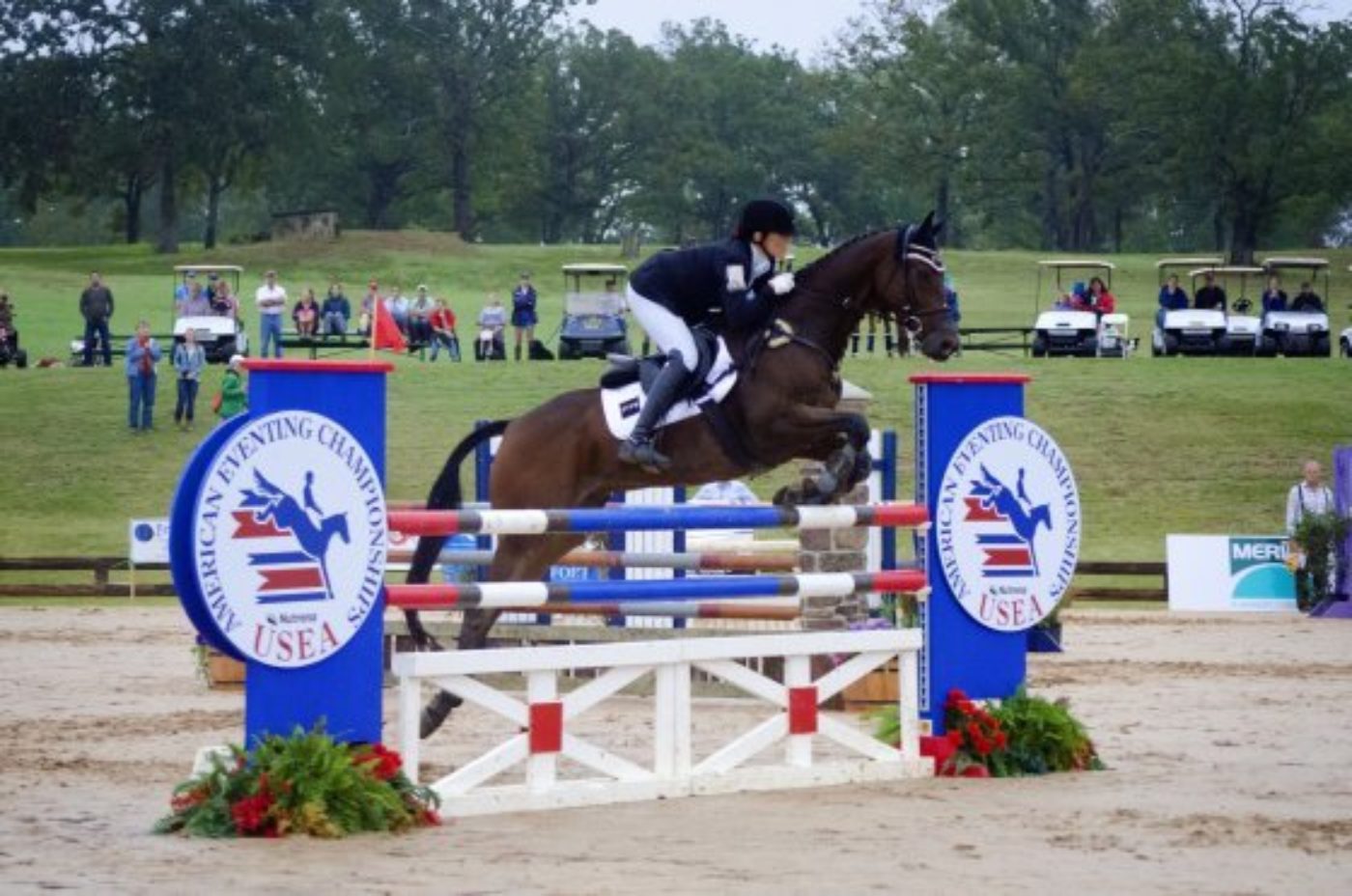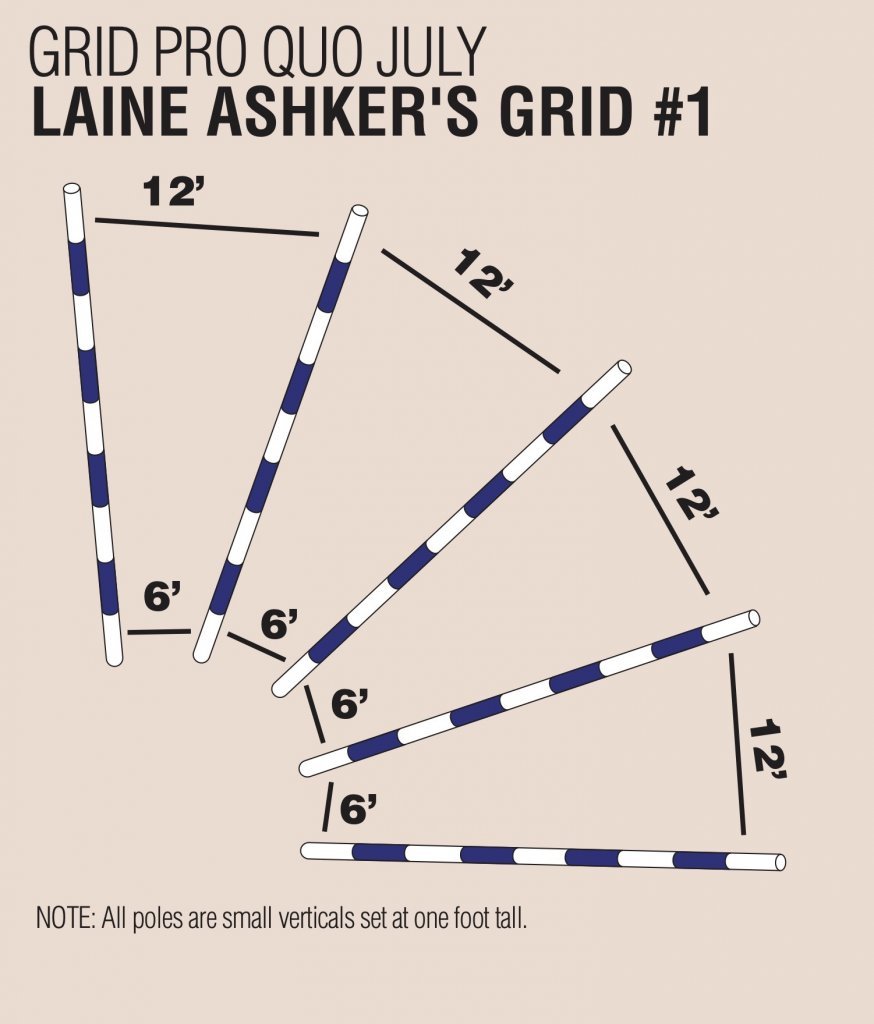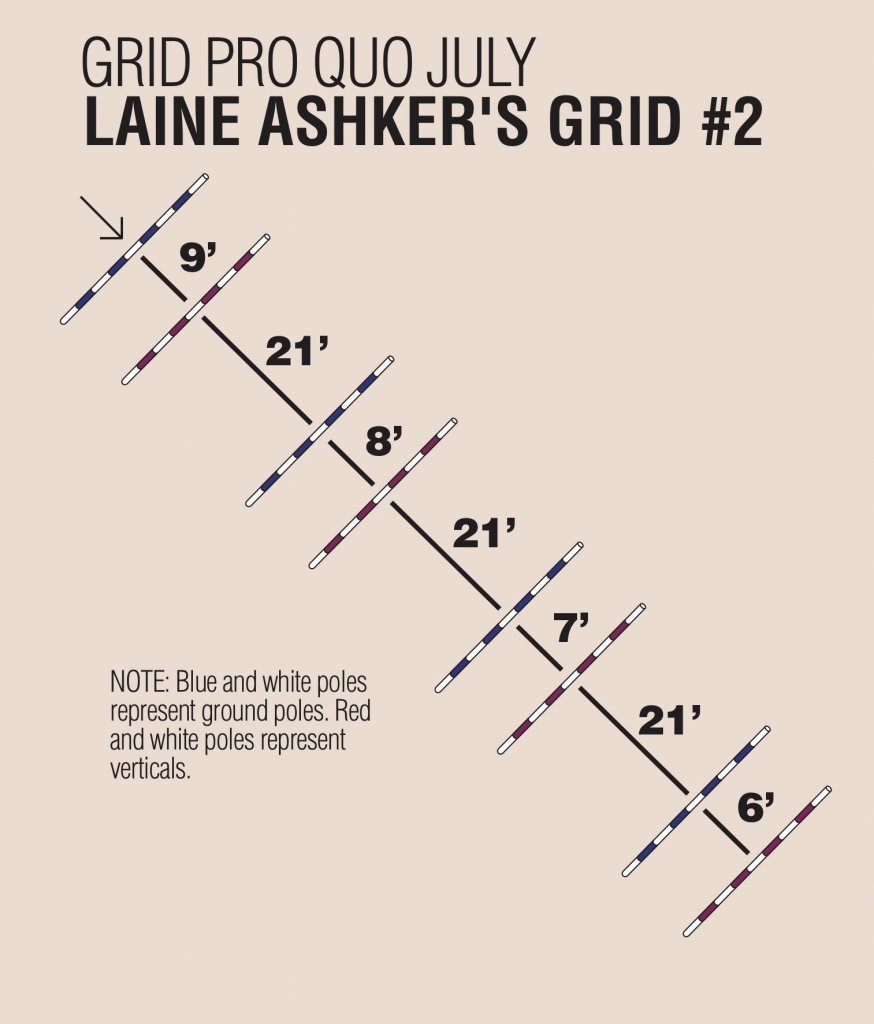

Don't let the winter weather get you down when you can use being stuck in the arena as an opportunity to fine tune your riding! In this series, we are reviving past Grid Pro Quo articles from Eventing USA to help you use the off-season to your advantage and keep you and your horse in tip-top shape for when it's time to get back out there. Click here to check out other past Grid Pro Quo exercises to spice up your arena this winter!
Why:
These are two of my favorite exercises for improving rider position and posture. I learned these both from my longtime coach Buck Davidson and utilize them often in the clinics that I teach throughout the year.
One of the things I stress to my students is that they need to learn to do less. The less we have to do as riders, the better our horses will perform. If we stay balanced and in the middle of our horse, then our horse has one less thing to worry about and can instead worry about his own body. You will notice that some of the best riders in the country could be considered the least interesting to watch because they are doing the least. These are the riders that interfere the least with their horses, and therefore their horses are able to keep a good rhythm throughout the course. Obviously, these riders put hours upon hours of training into making it look so easy!
Typically, horses want to lengthen their stride to jumps, whether they are eager to get there or because they are getting tired or because their stride is getting flat. Whatever the reason, these exercises can help. With Exercise 2, as the horse wants to lengthen, the distances get shorter and shorter, so your horse will either hit the rail or learn to compress and jump cleanly. Exercise 1 is more of your typical sharpening grid but with a twist since the bounces are on a bending line.
As a rider, it is your job to elevate your horse’s shoulders to aide them in getting a clean round. If you are out of balance, your horse is more likely to knock a rail down, but if you are balanced, your horse is more likely to be able to use his body most efficiently and leave the rails up.
In the end, these grids will teach you to become less invasive, which will make for a faster, safer, and prettier ride.
How:
Exercise 1:

Before heading towards your first jump, adequately warm up on the flat. Every horse is different, but I am always looking for my horses to be relaxed, balanced, and connected. Once you are properly warmed up, head straight for the fan of bounces. My greener horses and riders will start with the rails on the ground. Let the horses walk and then trot through them a few times to get a feel for the exercise. From the very beginning you should be going from the middle of one rail to the middle of the next rail. Look in the direction that you are going and use a leading rein if necessary. Once you have been through the rails a few times at the trot, canter through a few times. I will often repeat the exercise several times in one direction before changing to the other way.
For more experienced horses, or for those well warmed up with the rails on the ground, add the bounces with alternating sides in the cups. This will help you find the center of each rail as you go through the exercise. After a time or two through the exercise like this, raise the jumps to true verticals, but at no point should the verticals get any higher than one foot tall.
The biggest challenge for the rider in this exercise is keeping the horse straight. The close distance of the fences combined with the bending line make it quite easy for you to have a run out. If you properly warmed up, you will have equal feel in both reins and your seat will be in the center of the saddle. If you have accomplished both of these things, it should be theoretically easy to guide them through this bending line. If you still have a run out, the only way you will be able to fix it is if you are able to halt correctly. I always tell my students that I would rather them halt squarely in front of a jump a hundred times than to have a run out. So if you do have a run out, come back to the exercise, halt in front of the center of the rail, and give your horse a pat. Repeat this as many times as necessary until your horse is quietly going to the center of the jump. Eventually your horse will realize that you are in charge, and if you choose to halt, then you can choose to go straight through the exercise. The key to working through these issues is to reward, reward, reward!
These bounces help create a self-elevating canter as well as a rhythmic, even canter stride. Your goal is to maintain the canter that the bounces create long after the exercise is over!
Exercise 2:

After you have completed the bounce exercise a few times and are working on successfully maintaining your quality canter afterwards, move on to Exercise 2. Again, start with all the rails on the ground and build up the exercise jump by jump. Keep all the jumps at or below your comfort level until you have built up the entire exercise. The jumps are inherently bigger the closer you get to the base, and this exercise is forcing your horse to get close to the jumps, so you don’t want to make the jumps too big. Typically, if I am ready to raise the jumps, I will raise the first and last vertical.
This is the perfect exercise for horses that like to rush a bit. I find that horses tend to rush because they are used to being held off the jumps. The rails are there to do all the work, so your job as a rider is to stay balanced and out of the way. One trick that I have learned along the way for a rider and horse combination that has a tendency to rush is to come into the exercise a gear faster than you are used to. Because this exercise is so complex, your horse will have to slow down and think about his body in order to make it through without making a mess of the rails. This puts you in a win-win situation because your horse will learn to naturally slow down, and then you can reward him for being good!
About Laine Ashker
Based in Richmond, Virginia, Laine Ashker has built a business around teaching and training from the ground up. Laine takes pride in bringing up her horses herself with help from her mother, Buck Davidson, and Kim Severson. She has brought three horses to the four-star level, all of whom she started straight off the racetrack. Laine’s and her top mount, Anthony Patch, completed Rolex Kentucky CCI4* twice and represented the U.S. at the Olympic Test Event in Hong Kong. In addition to her busy competition schedule, Laine has a busy teaching schedule. She is a big believer in the power of positive reinforcement, which combined with a lot of patience, ensures that her students leave each lesson with a smile on their face. Learn more about Laine on her website.
This Grid Pro Quo first appeared in Volume 43, Issue 6 of Eventing USA.
The final day of competition at the the Yanmar America Tryon International Spring Three-Day Event presented by Tow & Collect crowned five new champions, featuring show jumping competition in Tryon Stadium and the final rounds of cross-country competition on the White Oak cross-country course at Tryon International Equestrian Center & Resort (Tryon International). Read more below.
At last fall's Full Moon Farm Horse Trials, 16-year-old Miriam Keefer guided her horse, Micky, over the final cross-country jump with quiet determination and a flash of joy. It was her first recognized event at the Novice level, and she placed second out of 16 competitors—qualifying her for both the USEA American Eventing Championships presented by Nutrena Feeds and a long-format three-day event.
Ros Canter and Lordships Graffalo were pure class in the final, tense moments of the MARS Badminton Horse Trials, jumping faultlessly to regain the title they won two years ago by just 1 penalty.
Day 3 of competition at the Yanmar America Tryon International Spring Three-Day Event presented by Tow & Collect showcased Clayton Frederick’s course design at the picturesque White Oak Cross-country course at Tryon International Equestrian Center & Resort (Tryon International). The leaderboard of the CCI4*-L division saw a shakeup after two phases of competition.